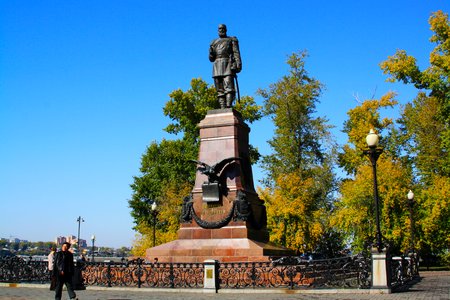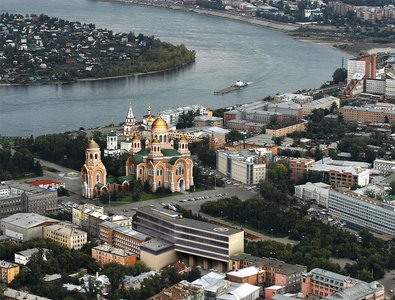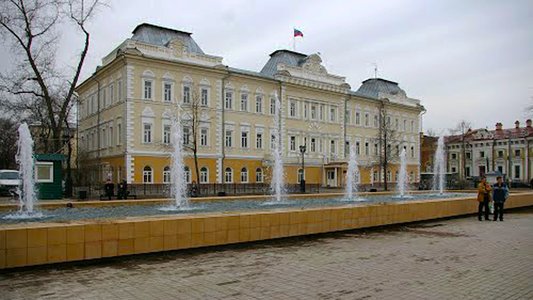Wonder-Workers Church
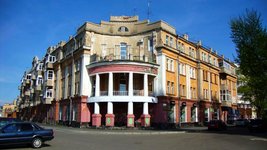

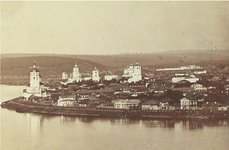
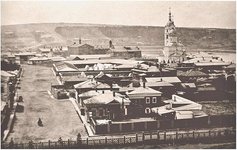
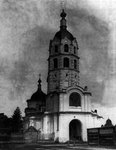

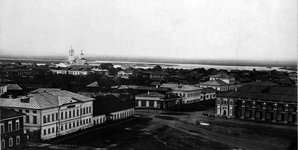
The church chronicle tells that the original wooden church (Bograd St., 1) was built in 1703 by immigrants from Veliky Ustyug, who brought with them to Irkutsk the icon of Procopius and John of the Ustyuzh Miracle Workers, which gave the name to the temple itself. The stone church was laid in the 1740s (a request for construction was received in 1741) at the expense of the young Irkutsk merchant M.I. Glazunov, also a native of Veliky Ustyug.
In August 1748, the wooden church burned down, and since the construction of the new stone was not yet completed, on November 10 of that year, only one throne was consecrated in the name of the Presentation of the Lord, located in the northern aisle. The main altar in the name of Procopius and John of the Ustyug Miracle Workers was consecrated on August 25, 1767.
The construction of the Miracle Work Church laid the foundation for the creation of a series of peculiar temples of the Siberian Baroque in Irkutsk. The building possessed characteristic stylistic features, which later became dominant in the cult architecture of Irkutsk and determined the identity of the local school. This church was, if not direct, then a close analogue to many stone temples of the 18th - early 19th centuries in the Irkutsk diocese. The volumetric-spatial composition with a small octagon temple on a quadruple, connected by a lower refectory with a tiered bell tower under the spire, later became traditional. In the decoration, the desire to complicate the facade layer is noticeable. Here for the first time there are panels embedded in the walls of various geometric shapes, which later became the emblem of the Siberian Baroque.
In 1879, the church was badly damaged during the fire. The priest G.A. Shergin took an active part in its restoration, who raised the necessary funds. In addition, he was approved by the provincial architect. As a result, the church acquired new forms of crowning parts, characteristic for the eclectic period. Updated church icons, made by the Moscow master of paintings Yepaneshnikov at the expense of brothers Alexander and Konstantin Shushakov.
The church was closed in the 1930s. Since 1925 it was registered as a monument of architecture and was protected by the state, which was confirmed by the decree of the Council of People's Commissars of the RSFSR, and yet the building was soon demolished. Now at the place where the church stood, there is a three-story residential building, made in the style of the Stalinist Empire with a hemispherical completion of the northern facade. However, he will never replace the loss of the Wonder-Worker Church. Wonder-Worker's Street was renamed Bograd Street on November 3, 1920 by order of the Executive Committee of the Irkutsk City Council of Workers and Red Army Deputies. The street is named after an active participant in the struggle for power of the Soviets in Siberia, a member of the Central Siberian propagandist Bograd Yakov Efimovich (1878-1919), who was shot by the White Guards. Bograd street was renamed back to Wonder-Workers street on May 26, 2016.
In August 1748, the wooden church burned down, and since the construction of the new stone was not yet completed, on November 10 of that year, only one throne was consecrated in the name of the Presentation of the Lord, located in the northern aisle. The main altar in the name of Procopius and John of the Ustyug Miracle Workers was consecrated on August 25, 1767.
The construction of the Miracle Work Church laid the foundation for the creation of a series of peculiar temples of the Siberian Baroque in Irkutsk. The building possessed characteristic stylistic features, which later became dominant in the cult architecture of Irkutsk and determined the identity of the local school. This church was, if not direct, then a close analogue to many stone temples of the 18th - early 19th centuries in the Irkutsk diocese. The volumetric-spatial composition with a small octagon temple on a quadruple, connected by a lower refectory with a tiered bell tower under the spire, later became traditional. In the decoration, the desire to complicate the facade layer is noticeable. Here for the first time there are panels embedded in the walls of various geometric shapes, which later became the emblem of the Siberian Baroque.
In 1879, the church was badly damaged during the fire. The priest G.A. Shergin took an active part in its restoration, who raised the necessary funds. In addition, he was approved by the provincial architect. As a result, the church acquired new forms of crowning parts, characteristic for the eclectic period. Updated church icons, made by the Moscow master of paintings Yepaneshnikov at the expense of brothers Alexander and Konstantin Shushakov.
The church was closed in the 1930s. Since 1925 it was registered as a monument of architecture and was protected by the state, which was confirmed by the decree of the Council of People's Commissars of the RSFSR, and yet the building was soon demolished. Now at the place where the church stood, there is a three-story residential building, made in the style of the Stalinist Empire with a hemispherical completion of the northern facade. However, he will never replace the loss of the Wonder-Worker Church. Wonder-Worker's Street was renamed Bograd Street on November 3, 1920 by order of the Executive Committee of the Irkutsk City Council of Workers and Red Army Deputies. The street is named after an active participant in the struggle for power of the Soviets in Siberia, a member of the Central Siberian propagandist Bograd Yakov Efimovich (1878-1919), who was shot by the White Guards. Bograd street was renamed back to Wonder-Workers street on May 26, 2016.
